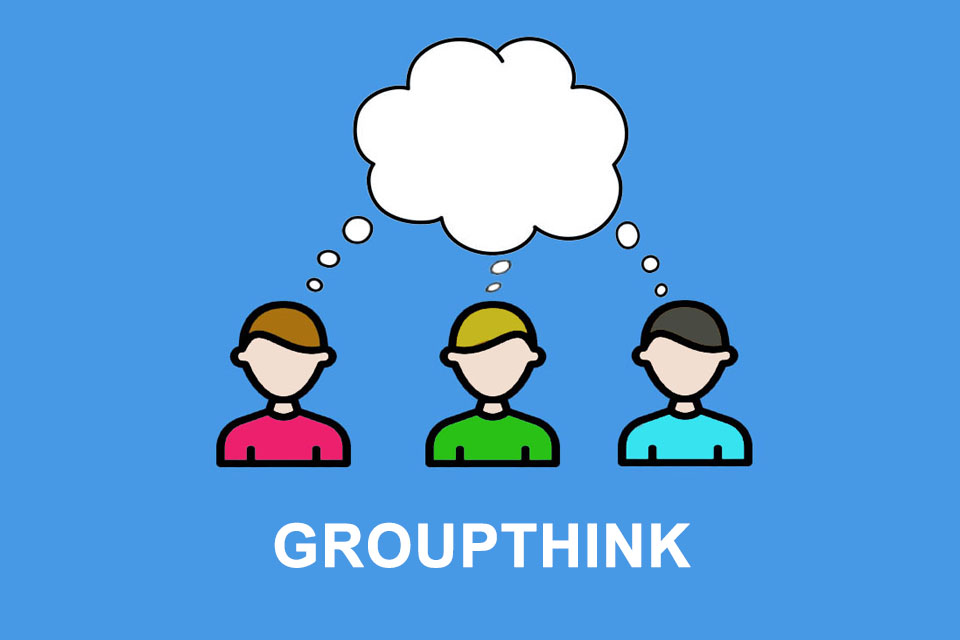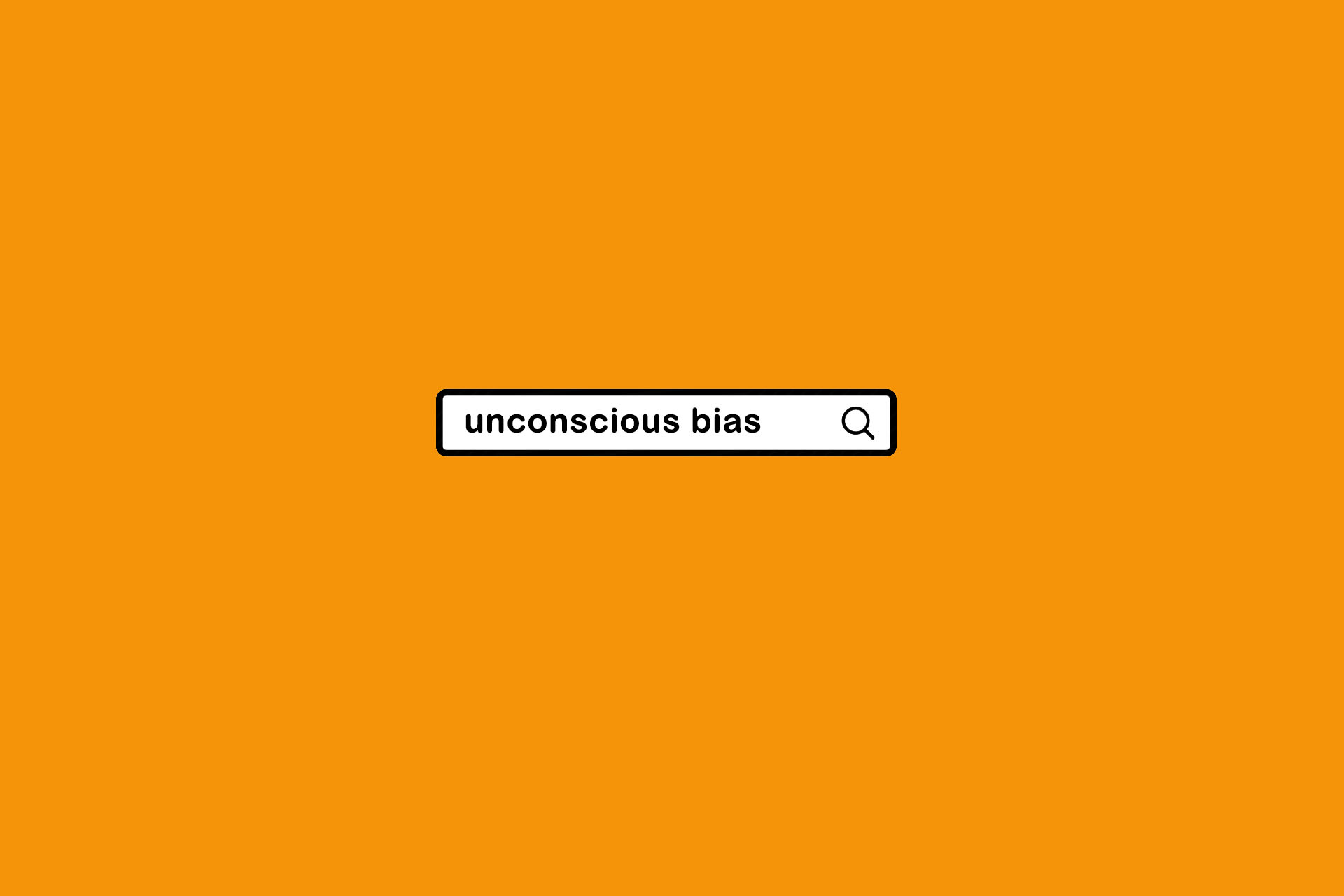What is Groupthink?
Table of Contents: Definition – Reasons – Risks – Characteristics – Measures – Notes
Smartpedia: Groupthink refers to a phenomenon in which people subscribe to the assumed or actual majority opinion of a group in order to maintain a group consensus.
Groupthink – the pursuit of unanimity in a group
Groupthink is a phenomenon that occurs when members of a group make irrational or rash decisions because they feel or actually experience pressure to conform to the group consensus or they want to maintain group cohesion. Often this leads to poor decision-making and a lack of critical evaluation of ideas.
The inventor of the term is considered to be the psychologist Irving Janis, who in 1972 described groupthink as a mode of thinking “used by individuals when the pursuit of consensus in a cohesive group becomes so dominant that it tends to override the realistic assessment of alternative courses of action”.1 This pursuit can be unconscious or conscious.
Interestingly, William H. Whyte, in his 1952 work “The Organisation Man”2 , had already paraphrased the dismissal of an outstanding employee with the following words: “The management was unhappy about the decision but they argued that harmonious group thinking was the company’s prime aim, and if they had promoted the brilliant man it would have upset the whole chain of company interpersonal relationships. What else, they asked plaintively, could they have done?”
Why does Groupthink occur?
There can be several reasons for groupthink:
One important factor is strong cohesion within the group. If the members of a group are strongly connected and committed to the group’s goals, they are more inclined to go along with the group’s consensus than to consider alternative perspectives. This is exacerbated when the group is isolated and has little access to external opinions and information, which reduces the opportunity to consider alternative perspectives.
Another cause of groupthink can be a strong leader. If a charismatic leader vehemently defends their opinions and decisions, group members may tend to adopt these opinions uncritically. The similarity of the group members also plays a role. If the members have a similar background, similar values and similar experiences, they are more likely to agree with each other and less likely to question the group’s decisions.
High levels of stress can also contribute to groupthink. Under pressure, group members tend to make quick decisions without carefully weighing all options. The illusion of invulnerability exacerbates this phenomenon when the group believes itself to be infallible and makes risky decisions without considering the possible consequences.
Finally, pressure to conform can also lead to group members ignoring their own opinions and ideas in order to fit in with the group. This social pressure can be very strong and can lead individuals to withhold their concerns or dissenting opinions in order to avoid conflict or to be accepted. Overall, these factors can cause a group to fall into a state of groupthink where critical thinking and consideration of alternative perspectives are suppressed.
What are the risks of Groupthink?
The risks of groupthink include:
- Poor decision-making: Group members may make irrational or hasty decisions because they are under pressure to conform to the group consensus or because they want to maintain group cohesion.
- Lack of critical evaluation: Group members may not critically evaluate ideas and alternatives, leading to lack of creativity and potential failure.
- Inability to anticipate problems: Because group members may be too focused on maintaining group cohesion, they may not anticipate potential problems or negative outcomes.
- Exclusion of dissenting opinions: Group members may exclude dissenting views and perspectives, leading to a lack of diversity of ideas and possible blindness to important information.
- Risky behavior: Group members may take more risks without fully assessing the possible consequences, leading to harmful outcomes.
- Ethical breaches: Group members may engage in unethical behaviour, such as lying or cheating, because they believe it is necessary to maintain group cohesion or achieve the group’s goals.
- Conflicts with other groups: Groupthink can lead to conflicts and misunderstandings with other groups or organisations that have different views or goals.
Last but not least, groupthink can lead to a lack of creativity, critical thinking and motivation among group members, resulting in lower productivity.
Various characteristics of Groupthink
There are several signs that groupthink is present:
- Pressure to conform: Group members may feel pressured to conform to the consensus of the group and do not express dissenting views.3
- Illusion of unanimity: Group members may believe that everyone in the group agrees with the decision, even if this is not the case.
- Rationalisation of bad decisions: Group members may rationalise bad decisions by finding ways to justify them rather than critically evaluating them.
- Stereotyping outsiders: Group members may stereotype or demonise outsiders or people who disagree with the group’s decisions.
- Self-censorship: Group members may censor their own thoughts and opinions to conform to the consensus of the group.
- Mindguards: Group members may appoint themselves or others as “guards” to protect the group from dissenting opinions and information.
- Incomplete consideration of alternatives: Group members may not fully consider alternative ideas or perspectives.
- Unfettered acceptance of leader’s or management’s views: Group members may accept the leader’s or management’s views without really challenging them.
It is important to note that groupthink can occur in any group, regardless of its size, type or purpose. It is a cognitive bias that is due to the dynamics of the group and not the characteristics of the individual.
Measures to avoid Groupthink
There are several strategies that can be used to avoid groupthink:
- Encourage dissent: Organisations should create a climate where group members feel comfortable expressing dissenting views and opinions.
- Appoint a devil’s advocate: Organisations can assign one or more group members the role of devil’s advocate to challenge the group’s decisions and consider alternative perspectives.
- Use different formats for decision-making: Formats such as 1-2-4-All – known from the so-called Liberating Structures – in which the number of discussion partners is gradually increased in order to jointly develop ideas or decisions, are very suitable for generating a genuine consensus on content.
- Use metrics: Using metrics to make decisions can make them more objective.
- Seek external opinions: It may make sense to invite experts or outsiders to provide impressions and perspectives on the group’s decisions.
- Rolling leadership: Some organisations have good experiences of rotating leadership roles within a group, as this ensures that different perspectives are heard on an ongoing basis.
- Taking breaks: It is advisable to allow time for group members to independently consider their individual opinions and, if necessary, to temporarily withdraw from the decision-making process.
- Use formal decision-making techniques: It is often also useful to use formal techniques such as multiple voting or the Delphi method to gather opinions and make qualified decisions.
- Openness to change: Organisation should be willing to reconsider decisions to some extent, provided new information or perspectives are available.
Basically, groupthink is rather subtle and therefore often difficult to recognise. As a result, avoiding groupthink requires active efforts and a willingness to challenge the status quo.4
Impulse to discuss
How important is it that participants in a discussion know that the phenomenon of groupthink exists?
AI prompt template for groupthink
🟡 Role
You are an experienced organisational psychologist and expert in team dynamics with extensive experience in analysing and preventing groupthink in various organisations.
🟢 Result
Create a practical guide to identifying and avoiding groupthink in teams. This guide should be made available to employees.
🟠 Content
- Use the AIDA model for the introduction to grab the reader’s attention.
- Use clear, understandable language with short paragraphs.
- Structure the text with meaningful subheadings.
- Include lists and tables to present complex information clearly.
- Include current research findings and case studies to support the topic.
🔵 Target audience
The guide is aimed at team leaders, project managers and executives who want to protect their teams from the negative effects of groupthink.
🟣 Examples
Include the following case studies:
- The Challenger disaster (1986)
- The Bay of Pigs invasion (1961)
- The Watergate scandal (1972)
🟤 Clarification of the assignment
Before you start creating the guide, please check that you have all the necessary information. If further details are required, ask specific questions.
🔴 Revision
After completing the first draft:
- Check the text for clarity and comprehensibility.
- Add a summary of the five most important points at the end.
- Ensure that all examples and recommendations used are up to date and relevant.
Notes:
[1] Victims of Groupthink: A Psychological Study of Foreign-Policy Decisions and Fiascoes, Houghton Mifflin, Boston 1972
[2] The Organization Man
[3] The pressure to conform was investigated by Salomon Asch in 1951 with a conformity experiment in which group pressure influenced the group members to such an extent that they evaluated obviously false statements as correct. In 1979, Serge Moscovici investigated how minorities can influence majorities, which was consequently also called the reversal of the Asch experiment.
[4] Some publications recommend changing the mindset of group members. Unfortunately, it is practically never described how this can work.
If you like the article or would like to discuss it, please feel free to share it in your network. And if you have any comments, please do not hesitate to send us a message.
And here you will find additional information from our t2informatik Blog:



